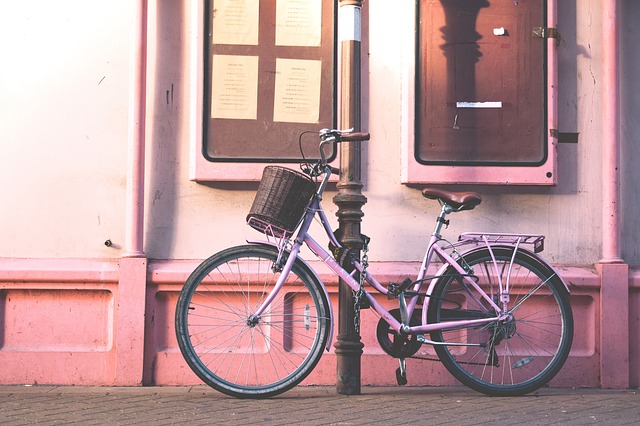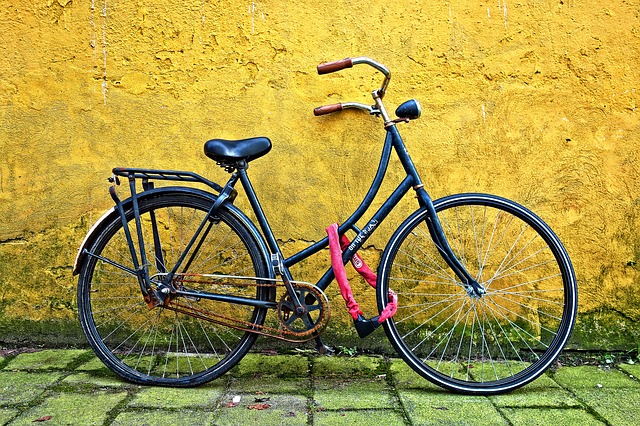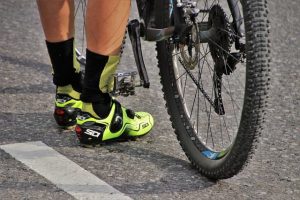I’ll thus outline various techniques for locking your bike in this post. Because locking your bike requires more than simply security, it also needs to be functional. How to lock a bike correctly? By the end of the post, you’ll be able to decide which option offers the right mix of ease and security for your particular situation.
Different locks are preferred in various ways. Therefore, before you purchase a lock, be sure you are familiar with the options below and try to consider which one is best for you at home and in your neighborhood.
Table of Contents
Where To Lock A Bike?
Nearby People
Try to choose a place with people nearby so it will be more obvious if a thief needs to use a tool to get through the lock. Also, check CCTV reports – banks and cash machines are usually well monitored.
If your bike is going to be locked up at night, choose a well-lit area where it will be hard for thieves to hide. Numbers are also safe, so try to find a place where your bike isn’t the only one.
Crucially, you need to lock the bike to an immovable object. If not, it’s easy for a thief to take your bike somewhere quiet to get rid of the lock.
A suitable bike spot is good, but railings are also an option, although building owners usually don’t allow this – take note of any signs.
In The Workplace
If you cycle to work, many workplaces will have bike parking, preferably with CCTV. You still need to lock your bike – don’t assume it’s safe just because it’s not easily accessible to the public.
At Home
You should also consider how safe your bike is at home. Try to keep it out of sight from the outside, think carefully about your safety Settings on the Strava, and consider attaching a ground anchor to the floor or wall to which you can attach the bike.
We also have a lot of suggestions for improving the safety of sheds.
How To Lock A Bike Correctly?
Locking a bike and leaving it unattended anywhere is a risk. A bike is stolen every 90 seconds in the UK, so your bike will never be 100 per cent safe.
Fortunately, there are some precautions you can take to reduce the likelihood of loss. Come with me and I’ll show you the best bike safety tips.
Choose A Busy Area To Protect Bikes
When choosing an area to lock your bike in, it is easy to lock it to the object closest to the destination, however, this is not always a good idea.
Your bike won’t stand out as much in a busy public bike park. It’s likely that other people will use worse bike locks than you, so their bikes will likely be targeted.
You should always lock your bike in a busy area where pedestrian flow is constant. Bike thieves don’t want to be seen trying to steal a bike, so they often target quieter areas.
Choosing an area in the city centre is usually your best bet as most areas here are covered by CCTV and people are always present.
Another reason to protect your bike in a busy area is that other people will be here to protect theirs. While this may sound selfish, other people’s bikes may be less securely locked than yours, meaning you are less likely to be targeted.
There’s no point in doing all this work if you’re using a cheap, unbranded bike lock. Find a lock to protect your bike.
Select a stationary object to lock the bike

You can have the most secure bike lock in the world, but if you lock your bike to an unsafe object, it can be easily stolen.
In other words, your bike is only as secure as the object it locks onto. Make sure you don’t repeat these mistakes and pay attention to the tree!
I would never suggest locking your bike to something made of wood. Although seemingly safe, it only takes a few seconds for a wooden fence or small tree to snap. Don’t get caught!
Also, trees are not locking points for bikes and can easily scratch or damage the ride. Also, your bike could scratch and damage trees, so think twice before locking!
Small trees can be broken or cut down relatively easily. Don’t use them as bike parks!
It is important to remember that land in all areas has one owner. Some landowners will not be happy if you attach a bike to their house.
You should also keep in mind that pedestrians have the right of way and your bike is likely to be removed if you obstruct access in a public area.
Try to protect your bike from dangerous places and places where you know it can be protected.
The bike was attached to a fence on a busy road and appeared to be blocking the way! Secure your bike in a bike park/shed whenever possible!
In central urban areas, you’ll often come across bike parks and other Spaces specifically designed for bike storage. These areas are your best bet when it comes to protecting your bike.
A standard bike track will be securely anchored to the ground, making it difficult for thieves to break free.
That said, it is important to check the safety and condition of the object locking the bike. It has become common practice for thieves to damage bike tracks, so that once an unsuspecting cyclist has “secured” their bike, the thief can easily remove it.
Note whether there are cuts, dents, rust, or any other type of defect.
The bike track is damaged and no longer usable.
Damaged bicycle track
Understand Surroundings And The Risk Of Bicycle Theft
If you’re not familiar with the area you’re in, it might be worth going somewhere else where you know your bike will be safer.
Some areas of town may make your bike more vulnerable to theft. That means it’s important to be aware of your surroundings and avoid these more dangerous areas as much as possible.
Lock Bike With A Quality Bike Lock
How Much a good bike Lock Costs A good bike lock isn’t always super expensive. Of course, most of the strongest bike locks are fairly expensive, but they will provide a higher level of security for your bike.
I recommend using a security silver or gold bike lock that has been sold. If the lock you are using does not have a security level, then upgrading is probably a good decision.
Lock Bicycle Parts In Order Of Value
The frame is almost always the most expensive component of a bike, followed by the wheel. This means that you should prioritize the security of your framework over other attachments.
After the frame is fixed, you can fix the next most expensive part, which is usually the wheel. Wherever you protect your bike, you should follow this procedure.
If you customize your bike and add, for example, an expensive wheelset, then you need to know which components are most valuable. Make sure their safety is a priority.
Stick to this approach and your chances of having your bike stolen will be minimized. You will deter thieves because they will see that you know the best way to lock your bike!
If you can lock your saddle or handlebars, do so. A desperate thief will gladly strip your bike of parts one by one.
The owner could at least use their D-lock to secure the frame and rear wheels! Note that this is a costly mistake.
Remove Or Secure Bicycle Accessories
As mentioned earlier, thieves will target the more valuable parts of your bike. However, if they can release quickly and escape using small accessories such as lights or seat posts, they will.
A good set of bike lights can bear a high price, so never leave them hanging from your bike when it’s locked up. Removing the lights takes a few seconds, and anyone can do it. Take them with you.
Larger attachments, such as seat posts and saddles, take slightly longer to remove and usually require an Allen wrench (Allen wrench) to remove. That doesn’t mean they’re safe. It’s a good idea to remove these parts yourself before anyone else does!
Without an Allen wrench, a thief will not be able to disassemble parts using an Allen wrench. Fortunately, almost all of the accessories you’ll find on a bike are secured with standard hex bolts, which means all of these can be protected and secured with hex bolts.
Use A Bike Cover To Shield
Thieves always target the bikes that look the least secure because they don’t want to be there for too long. An effective and inexpensive way to deter bike theft is to use a simple bike cover.
Use The Slider Below
A good quality bike cover will not only keep your bike dry and avoid unnecessary wear and tear, it will also keep it out of sight.
The last thing a thief wants to do is rummage around with bike covers, drawing unwanted attention and increasing the chances of being caught.
This is especially effective if you are protecting your bike in a public area where there are other bikes. Thieves tend to overlook covered bikes, and in terms of price, the cost of high-quality coverage is well worth the investment.
How To Leave A Bike Unlocked?
- Don’t lock your bike with only the front wheel. A thief can simply release the wheel and take the rest of your bike in seconds. A lone front wheel fixed to a bike rack is an all too familiar sight
- Don’t lock your bike to another bike.
- Locking the bike only through the frame makes the wheels vulnerable. Leaving a lot of space inside the lock also makes it easier for thieves to get the levers they need to break it. Jack Luke/Instant Media
- Do not lock the bike by the frame alone. You’ll leave enough room inside the lock to make it vulnerable to a thief who can steal your unsecured wheels.
- Before you leave your bike, double-check that the locks are secure and that you have secured them around your anchor points!
Conclusion
The greatest bike lock is just the beginning. You also need to be aware of proper bike locking techniques. Additionally, you must securely lock your bike wherever you go, including your home, workplace, and school.
A good place to start when locking your bike up on the street is to do it near other bikes, busy traffic, and CCTV cameras.
But make sure you lock it properly as well, including locking the wheels and the frame, keeping the lock off the ground, and packing a U-lock as full as you can.



